Categories:
The AK-47, one of the most recognizable and influential guns in the world, owes much of its robustness and reliability to its intricate design. Central to this design is the receiver, an essential component that serves as the main body housing the weapon’s internal mechanisms. The receiver is more than just a framework; it is the heart of the AK-47, providing structural integrity and ensuring seamless operation of the gun.
Constructed predominantly from stamped or milled steel, the receiver is designed to withstand harsh conditions and significant stress, characteristics that have contributed to the AK-47’s reputation for durability and longevity. Within the receiver are housed several critical elements, such as the bolt carrier group, the trigger mechanism, and the magazine well. Each of these components plays a pivotal role in the gun’s operation, from the loading of ammunition to the discharge of rounds.
The receiver’s design is meticulously engineered to facilitate the smooth functioning of these internal components. For instance, the bolt carrier group, which includes the bolt, firing pin, and gas piston, fits precisely within the receiver to ensure consistent, reliable cycling of the weapon. The meticulous tolerances and robust construction of the receiver prevent malfunctions and contribute to the AK-47’s famed reliability in diverse environments, from arid deserts to humid jungles.
In addition to its role in the weapon’s functionality, the receiver also serves as a platform for various attachments and modifications. Whether it’s mounting optics, attaching a folding stock, or securing a tactical grip, the receiver provides the necessary stability and support for these enhancements, allowing users to customize their AK-47s to suit their specific needs and preferences.
Ultimately, the receiver’s importance cannot be overstated. It is the foundational component that unifies the various elements of the AK-47, translating mechanical precision into operational efficiency. The strategic design and robust materials used in the receiver not only ensure the weapon’s reliability and versatility but also underscore the ingenuity behind the AK-47’s enduring legacy in both military and civilian uses across the globe.
The AK-47 receiver serves as the primary housing for the rifle’s internal components and plays a critical role in the weapon’s overall functionality and reliability. The materials and construction of the AK-47 receiver are pivotal aspects that contribute to the gun’s famed durability and robustness. Typically, the AK-47 receiver is constructed from stamped sheet metal. This manufacturing method was a significant shift from the earlier milled receivers, which were machined from a solid block of steel.
Stamped sheet metal offers a considerable advantage in terms of production speed and cost, aligning perfectly with the AK-47’s design philosophy of mass-producibility and simplicity. The sheet metal used for the receiver is most often steel, selected for its excellent balance of strength and flexibility. Steel ensures that the receiver can withstand the substantial stresses and high rates of fire that characterize the operation of the AK-47.
Furthermore, the steel used is usually of a specific grade that offers resistance to wear and corrosion, enhancing the lifespan of the receiver. Heat treatment processes are commonly applied to the stamped steel to further increase its hardness and resistance to mechanical deformation. One of the notable features of the AK-47 receiver is the implementation of reinforcement elements, such as rivets and crossbars, which provide additional structural integrity.
These reinforcements are crucial for maintaining the shape and strength of the receiver, especially under the intense pressures exerted during prolonged use. The precise placement and quality of these reinforcements are key factors that ensure the seamless operation of the gun. Another significant aspect of the receiver’s construction is the incorporation of rails and guide paths. These elements facilitate the smooth movement of internal components, such as the bolt carrier group, ensuring reliable cycling of ammunition.
The receiver also houses the trigger mechanism, which must be securely positioned and protected to maintain consistent and safe operation. In addition to functional considerations, the receiver is often finished with anti-corrosive coatings or treatments. These finishes protect the steel from rust and environmental degradation, further enhancing the durability of the gun in a variety of conditions.
The AK-47, a pioneering assault rifle designed by Mikhail Kalashnikov, owes much of its legendary durability and reliability to its robust receiver. The receiver is the central framework of the gun, housing all the critical internal components necessary for its function. Crafted primarily from steel, this main body forms the backbone of the AK-47, providing a sturdy and resilient platform that can endure harsh environments and extensive use.
The design of the AK-47 receiver is ingeniously straightforward, which contributes to the gun’s ease of manufacture and maintenance. The receiver’s simplistic construction accommodates the rifle’s gas-operated mechanism, which is pivotal for its semi-automatic and automatic firing capabilities. At the heart of the receiver lies the bolt carrier group, which performs the vital roles of chambering rounds, extracting spent cartridges, and enabling the firing sequence.
The receiver also includes the trunnion, which supports the barrel and absorbs the recoil energy when a round is discharged. This integration ensures that the rifle maintains structural integrity under continuous use.
One of the standout features of the AK-47 receiver is its compatibility with a stamped or milled production process. Stamped receivers are made from a sheet of metal, which is pressed and then riveted to form the housing, making this process cost-effective and suitable for mass production. Milled receivers, on the other hand, are machined from a solid block of steel, offering additional strength but at a higher production cost.
Both variants are designed to function reliably, but stamped receivers have become more prominent due to their more economical production.
The receiver also accommodates various attachments and modifications, thanks to its simple yet effective construction. Internal modifications, such as enhanced triggers and firing pins, can be easily integrated, enhancing the gun’s performance and adaptability. Externally, the receiver provides mounting points for accessories like scopes, grips, and rails, further extending the rifle’s versatility.
In summary, the design and anatomy of the AK-47 receiver are key to the rifle’s operational efficiency and legendary reliability. Its simple yet robust construction accommodates essential internal mechanisms, supports extensive customization, and facilitates both stamped and milled manufacturing processes, ensuring a durable and versatile platform for various combat scenarios.
The manufacturing process of the AK-47 receiver, the main body housing internal components crucial for the weapon’s function, is a blend of precision engineering and durable materials designed to withstand rigorous use. It starts with a flat piece of sheet steel, typically ranging in thickness from 1.0 to 1.6 millimeters, selected for its strength and malleability which are critical for the gun’s longevity and performance.
The first step in the manufacturing process involves stamping the sheet steel into the basic shape of the receiver. This stamping process employs large, powerful presses capable of exerting immense force to mold the steel into the correct profile with openings for the trigger, magazine, and other components. Once the primary shape is achieved, the piece must undergo bending operations where precision tools fold the metal into its final form.
These steps are crucial as they determine the overall structural integrity and alignment of the receiver.
Following the stamping and bending operations, the receiver undergoes milling where precise cuts and holes are drilled. These include the alignment of the rails that guide the bolt carrier and the precise positioning holes for pins and rivets that will later secure various parts of the rifle, such as the trigger and hammer groups. Attention to detail here is paramount because even slight deviations can affect the reliability and overall function of the gun.
Heat treatment is an essential subsequent step. The partially finished receiver is subjected to high temperatures in a controlled environment to improve its hardness and durability. This process, also known as annealing, fortifies the steel, ensuring that it can endure the stresses of repeated firing without deforming or failing.
The final stages involve finishing operations, where the receiver is cleaned, polished, and coated for corrosion resistance. This often includes a layer of protective finish, such as phosphate or paint, which not only helps to prevent rust but also gives the receiver its typical matte black appearance. After inspection for quality control, the completed receiver is now ready for assembly with the other components of the AK-47, fulfilling its role as the backbone of this renowned gun.
The receiver of the AK-47 plays an integral role in the functionality and overall operability of the gun by providing a sturdy and precise housing for its internal components. This part is essentially the backbone of the rifle, holding many critical elements together in a cohesive unit. In a gun such as the AK-47, which relies on durability, reliability, and efficiency, the receiver’s role cannot be overstated.
At its core, the receiver houses several vital components, including the bolt carrier group, trigger assembly, and magazine, all of which are essential for the gun’s operation. The bolt carrier group is crucial for the cycling of the rifle; it opens and closes the breech, ejects spent cartridges, and chambers a new round. The trigger assembly, meanwhile, is responsible for initiating the firing sequence by releasing the hammer that strikes the firing pin.
The magazine, which feeds ammunition into the gun, is securely locked into place by a well-designed receiver.
The receiver must endure significant stress and recoil forces during the firing process, necessitating a design that prioritizes robustness and reliability. The materials used, typically high-grade steel or a combination of steel and other alloys, provide the necessary strength to withstand repeated use under various conditions. Its architecture must also ensure that the internal components remain precisely aligned and securely fastened, enabling smooth and consistent operation.
Furthermore, the receiver’s design must accommodate ease of maintenance and assembly. It often features access points that allow users to clean and replace components without disassembling the entire gun, thereby extending the rifle’s service life. The ability to disassemble and reassemble parts is vital for keeping the gun operational in different environments and under various operational stresses.
In summary, the receiver in an AK-47 is a critical element that houses and protects the internal components necessary for the rifle’s operation. It ensures that parts like the bolt carrier group, trigger assembly, and magazine work in unison while also withstanding the rigors of repeated firing. This makes the receiver indispensable to the AK-47’s famed durability and reliability, proving that its role is essential for maintaining the gun’s overall performance.
The maintenance and durability of the AK-47 receiver, which serves as the main body housing the gun’s essential internal components, are pivotal to the weapon’s overall performance and longevity. The receiver’s construction typically utilizes stamped or milled steel, known for their robustness and resistance to wear and tear. Ensuring the longevity of this crucial component requires consistent, meticulous maintenance practices.
Regular cleaning is critical for maintaining the integrity of the receiver. Given that the AK-47 operates in diverse and often harsh environments, it is prone to accumulating dirt, sand, and other debris. These contaminants, if not removed, can cause excessive wear on the internal parts housed within the receiver. Using a proper cleaning kit, gun owners should disassemble the receiver according to the manufacturer’s instructions, carefully clean all accessible areas with a suitable solvent to remove residues, and then lightly lubricate it to prevent rust.
Lubrication plays a crucial role in preserving the receiver’s functionality. Applying a light coat of high-quality gun oil to the interior surfaces and moving parts housed within the receiver reduces friction, which can lead to smoother operation and prolonged life of the components. However, it is essential not to over-lubricate, as excess oil can attract dust and debris, contributing to potential malfunctions.
Preventing corrosion is another significant aspect of maintaining the receiver. Even though the steel used in the receiver is treated for durability, it is not entirely immune to rust, especially in humid or corrosive environments. Regular inspection for signs of rust or corrosion, particularly in nooks and crannies where moisture may accumulate, should be conducted. If rust is detected, it should be promptly addressed with rust removal products and followed by a protective coating to inhibit future oxidation.
Durability can also be affected by handling practices. Ensuring the proper storage of the gun, avoiding excessive drops or impacts, and using the rifle within its operational parameters will mitigate undue stress on the receiver. Additionally, replacing worn or damaged components promptly will prevent cascading failures that could compromise the receiver’s integrity.
By adhering to these essential practices, the receiver of the AK-47 can maintain its durability, ensuring that it continues to function reliably in a variety of demanding conditions.
The AK-47 receiver, as the main body housing internal components, is crucial for the weapon’s function and reliability. Over the years, several innovations and variations in the design of AK-47 receivers have emerged, reflecting advancements in manufacturing technologies, materials, and user demands. One of the primary innovations in AK-47 receivers revolves around the materials used in their construction. The original design utilized stamped sheet metal, which was both economical and efficient for mass production.
However, issues with durability and rigidity led to the development of milled receivers. These receivers, produced from a solid block of steel, provided enhanced strength and longevity, though at the cost of increased weight and more complex manufacturing processes. The trade-off between stamped and milled receivers has been a consistent theme in the evolution of the AK-47 platform. Another significant innovation is the incorporation of modern manufacturing techniques, such as CNC (Computer Numerical Control) machining.
This technology allows for greater precision and consistency in the production of receivers. CNC machining has enabled manufacturers to produce receivers with tighter tolerances and improved fit and finish, enhancing the overall performance of the gun. Additionally, this method has facilitated the integration of modular design elements, allowing for easier customization and accessory mounting. Variations in receiver design have also been influenced by the need to accommodate different calibers and configurations.
While the original AK-47 was chambered in 7.62x39mm, subsequent models and derivatives have been adapted to fire a variety of cartridges, including 5.45x39mm and 5.56x45mm NATO. This necessitated changes in the receiver to ensure proper feeding, extraction, and ejection of different ammunition types. Some modern receivers are designed to be more versatile, capable of quickly switching between calibers with minimal modifications.
The proliferation of civilian and sporting versions of the AK-47 has further driven innovation in receiver design. Manufacturers have introduced lightweight aluminum receivers, skeletonized for reduced weight while maintaining structural integrity. Additionally, the rise of the accessory market has led to the development of receivers with integrated Picatinny rails and other mounting points, allowing users to easily attach optics, lights, and grips.
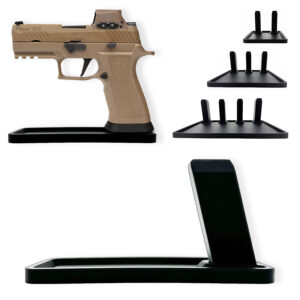
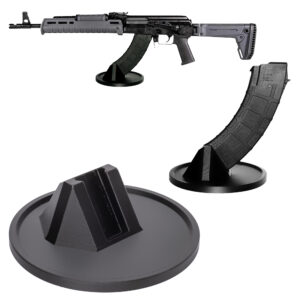

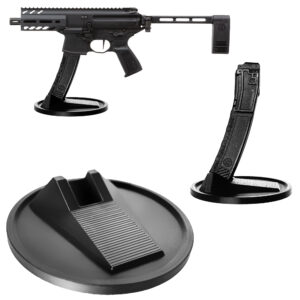
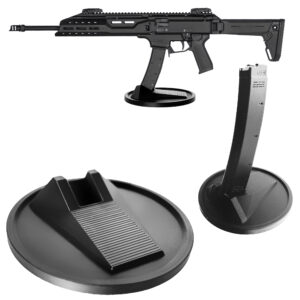


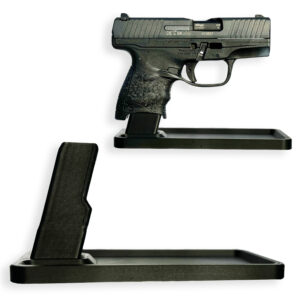
Colt
Colt M4 Carbine
Colt LE6920
Colt AR-15 A4
Daniel Defense
DDM4 V7
DDM4 V9
DDM4 V11
DDM4 ISR (Integrally Suppressed Rifle)
Smith & Wesson (S&W)
M&P15 Sport II
M&P15 Tactical
M&P15T
Bravo Company Manufacturing (BCM)
BCM Recce-16
BCM Recce-14
BCM MCMR Series
Aero Precision
M4E1 Series
AC-15
AR15 Pistol (Various Configurations)
Ruger
Ruger AR-556
Ruger SR-556
Ruger AR-556 MPR (Multi-Purpose Rifle)
Springfield Armory
Saint Victor
Saint Edge
Saint AR-15
PSA (Palmetto State Armory)
PSA PA-15
PSA AR-V
PSA Jakl (AR Pistol)
FN America
FN 15 Tactical Carbine
FN 15 Patrol
FN 15 DMR
Wilson Combat
Recon Tactical
Super Sniper
Protector Carbine
SIG Sauer
SIG M400 Tread
SIG M400 Elite
SIG M400 SDI
LWRC International
IC DI (Direct Impingement)
IC SPR
IC A5
Bushmaster Guns
XM-15 QRC
Bushmaster MOE
XM-15 Patrolman
Rock River Arms
LAR-15 Entry Tactical
LAR-15 Predator
LAR-15 Elite Comp
Stag Arms
Stag 15 Tactical
Stag 15L (Left-Handed Models)
Stag 15 Valkyrie
Noveske Rifleworks
Noveske Gen 4 N4
Noveske Space Invader (AR Pistol)
Noveske Recon
Anderson Manufacturing
AM-15 Optic Ready
AM-15 M4 Carbine
AM-15 Precision Rifle
Adams Arms
AA-15 Piston Rifle
P2 AARS (Adams Arms Rifle Series)
Black Rain Ordnance
SPEC15 Series
BRO Predator
Fallout 15
Diamondback Guns
DB15 Series
DB15CCMLB
DB15EB
Del-Ton Inc.
DTI-15
Del-Ton Echo 316H
Sierra 316M
Windham Weaponry
Windham SRC
Windham VEX-SS
Windham RMCS-4 (Caliber Conversion System)
Christensen Arms
CA-15 G2
CA-15 Recon
CA-15 Titanium Edition
Patriot Ordnance Factory (POF-USA)
Renegade Plus
P415 Edge
Revolution DI
LaRue Tactical
PredatAR
OBR (Optimized Battle Rifle)
LaRue Stealth 2.0
Battle Arms Development
Workhorse Patrol Carbine
BAD556-LW (Lightweight)
Authority Elite Rifle
Faxon Guns
Ascent AR-15
FX-19 (AR Pistol)
Streamline Ultralight Series
KE Arms
KE-15 SLT (Super Lightweight Tactical)
KE-15 Scout Carbine
Primary Weapons Systems (PWS)
MK1 MOD 2-M
MK116 PRO
MK107 (Piston AR Pistol)
ZEV Technologies
ZEV Core Elite Rifle
ZEV AR15 Billet Rifles
Franklin Armory
BFSIII AR-C1
Militia Model
F17-L (Chambered in .17 WSM)
Seekins Precision
SP15 DMR
NX15 Skeletonized Rifle
Havak Bravo
Aero Precision (Additional Models)
EPC-9 (Pistol Caliber ARs)
VG6 AR Rifles
Barrett Guns
REC7 DI
REC7 Gen II
CMMG
MK4 RCE
Resolute 300
Banshee (AR Pistol)
DPMS Panther Arms
Panther Oracle
Panther LR-308
H&K (Heckler & Koch)
HK MR556A1
HK416 (Military Variant)
Rock Island Armory (Armscor)
VR-80 Tactical AR (Shotgun AR Platform)
Troy Industries
Troy SPC-A3
Troy PAR (Pump Action AR)
Wilson Tactical
Tactical Recon AR
Protector Series
F1 Guns
FDR-15 Skeletonized Rifle
BDRx-15 Series
Juggernaut Tactical
JT-15
JT-10 Precision Rifle
AeroSurplus
Surplus AR-15 Rifles (Budget Models)
Thunder Tactical
AR-15 Basic Carbine
Tactical Builder Sets
Radical Guns
RF-15
Forged AR-Series
Dark Storm Industries
DS-15 Featureless Rifles
DS-10 Typhoon
DRD Tactical
Paratus
Aptus AR Rifles
Bear Creek Arsenal
BCA-15
AR Complete Upper Builds
Aero Survival Rifles (ASI)
ASR Tactical Series
Tactical Edge
WARFIGHTER Series
AR-15 Lightweight Rifles
Lone Star Armory
TX15 DMR
TX15 Carbine
HERA Arms
HERA H7
HERA AR-15 Lower Builds
IWI (Israeli Weapon Industries)
Zion-15
DRD Tactical
Tactical Modular Rifles
Quick-Takedown Rifles
V Seven Weapons
1776 Rifle
Hyperlite Rifle
Core Rifle Systems
Core15 Tac III
Core15 Patrol Rifle
Armalite (Original AR-15 Creator)
M15 Tactical
M15 A4 Carbine
DEF15 (Defensive Sporting Rifle Series)
PSA (Palmetto State Armory Additional Models)
PSAK-47 Hybrid (AR-AK Style Hybrid)
PSA Dagger (Pistol Caliber Configurations)
Odin Works
OTR-15
Odin Recon Rifle
Maxim Defense
MDX-508 PDX (Compact AR Pistol)
MDX-510 Rifle